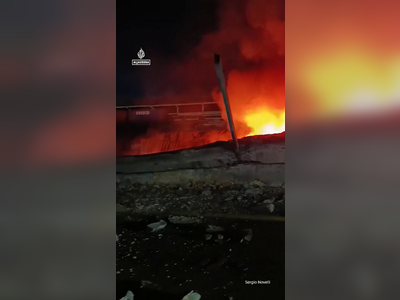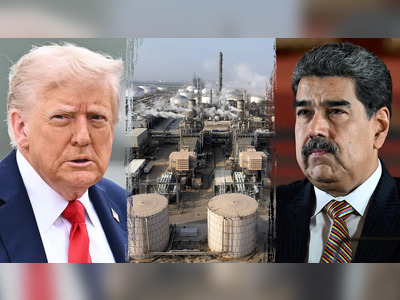Tequila Sector Faces Oversupply Challenge as Agave Prices Fall Sharply
Small-scale farmers and industry regulators encounter considerable difficulties as agave prices plummet after a surge in tequila production.
In the western Mexican state of Jalisco, the tequila sector is facing a significant oversupply of agave, the essential ingredient for tequila, following a period of booming prices.
At one point, the price of agave soared to thirty pesos per kilogram, around one dollar and forty-five cents, which triggered a rapid increase in cultivation. The number of agave growers surged from about three thousand two hundred in 2014 to over forty-one thousand in 2023.
One individual impacted by this situation is a farmer named Antonio, a forty-four-year-old who spent his childhood on a family ranch in the area.
Although he was initially trained as a physician, Antonio returned to farming with the onset of the tequila boom.
He and his partners invested ninety-seven thousand dollars in leasing land, acquiring young agave plants, and providing essential care.
With agave taking up to seven years to mature, these investments aimed to ensure long-term gains, especially after Antonio secured a contract with a tequila producer that encouraged increased cultivation.
However, the absence of price protection in that contract ended up being a costly oversight.
By 2022, with the first mature crops still two years away, agave prices began their sharp decline, plummeting to between one and three pesos per kilogram – about fifteen to forty-five cents.
This unforeseen drop has compelled many small farmers to reduce care for their crops, with some even opting to destroy immature plants and replant with alternative crops like corn.
The crisis has intensified existing tensions in an industry characterized by cycles of boom and bust.
Numerous small growers, some of whom took out loans to expand their operations, are now experiencing considerable financial setbacks in this oversupplied market.
Industry participants and farmers have expressed concerns that the regulatory framework overseen by the Tequila Regulatory Council lacks adequate oversight.
Critics maintain that the Council, tasked with licensing and quality assurance, is disproportionately influenced by large producers, leaving smaller farmers with minimal protection.
Local representatives and activists have organized groups calling for stricter regulations, including requirements to use agave sugar instead of cane sugar in blended tequilas, as well as measures to centralize control over agave planting.
These groups argue that enhanced regulation could help reduce price fluctuations and stabilize the market.
In one instance, a notable activist from a multi-generational tequila family recounted that previous crises within the industry caused widespread suffering, warning that the current predicament could have significant repercussions if left unaddressed.
Concurrently, major international beverage firms have heavily invested in modernizing production and expanding distribution, even as consumer demand has begun to cool following years of rapid growth.
In the United States, the biggest export market for tequila, sales data reveal that after a boom in consumption, demand has since stabilized, with significant declines noted in recent years.
In response, industry regulators are implementing a new program focused on promoting contractual purchase agreements and strategic land-use planning, bolstered by computerized supply chain tracking and statistical tools aimed at enhancing decision-making.
These initiatives are part of a larger effort to establish a more resilient production model in a market that has long been vulnerable to fluctuations in demand and subsequent oversupply.
At one point, the price of agave soared to thirty pesos per kilogram, around one dollar and forty-five cents, which triggered a rapid increase in cultivation. The number of agave growers surged from about three thousand two hundred in 2014 to over forty-one thousand in 2023.
One individual impacted by this situation is a farmer named Antonio, a forty-four-year-old who spent his childhood on a family ranch in the area.
Although he was initially trained as a physician, Antonio returned to farming with the onset of the tequila boom.
He and his partners invested ninety-seven thousand dollars in leasing land, acquiring young agave plants, and providing essential care.
With agave taking up to seven years to mature, these investments aimed to ensure long-term gains, especially after Antonio secured a contract with a tequila producer that encouraged increased cultivation.
However, the absence of price protection in that contract ended up being a costly oversight.
By 2022, with the first mature crops still two years away, agave prices began their sharp decline, plummeting to between one and three pesos per kilogram – about fifteen to forty-five cents.
This unforeseen drop has compelled many small farmers to reduce care for their crops, with some even opting to destroy immature plants and replant with alternative crops like corn.
The crisis has intensified existing tensions in an industry characterized by cycles of boom and bust.
Numerous small growers, some of whom took out loans to expand their operations, are now experiencing considerable financial setbacks in this oversupplied market.
Industry participants and farmers have expressed concerns that the regulatory framework overseen by the Tequila Regulatory Council lacks adequate oversight.
Critics maintain that the Council, tasked with licensing and quality assurance, is disproportionately influenced by large producers, leaving smaller farmers with minimal protection.
Local representatives and activists have organized groups calling for stricter regulations, including requirements to use agave sugar instead of cane sugar in blended tequilas, as well as measures to centralize control over agave planting.
These groups argue that enhanced regulation could help reduce price fluctuations and stabilize the market.
In one instance, a notable activist from a multi-generational tequila family recounted that previous crises within the industry caused widespread suffering, warning that the current predicament could have significant repercussions if left unaddressed.
Concurrently, major international beverage firms have heavily invested in modernizing production and expanding distribution, even as consumer demand has begun to cool following years of rapid growth.
In the United States, the biggest export market for tequila, sales data reveal that after a boom in consumption, demand has since stabilized, with significant declines noted in recent years.
In response, industry regulators are implementing a new program focused on promoting contractual purchase agreements and strategic land-use planning, bolstered by computerized supply chain tracking and statistical tools aimed at enhancing decision-making.
These initiatives are part of a larger effort to establish a more resilient production model in a market that has long been vulnerable to fluctuations in demand and subsequent oversupply.











